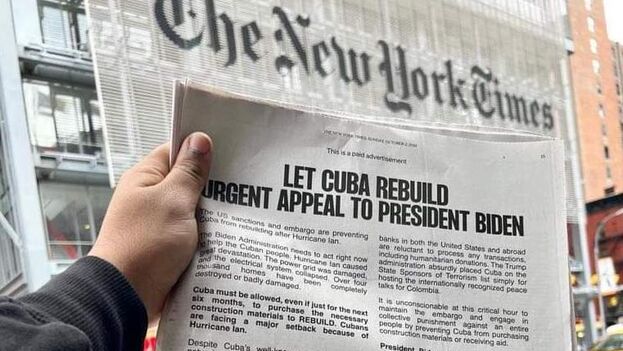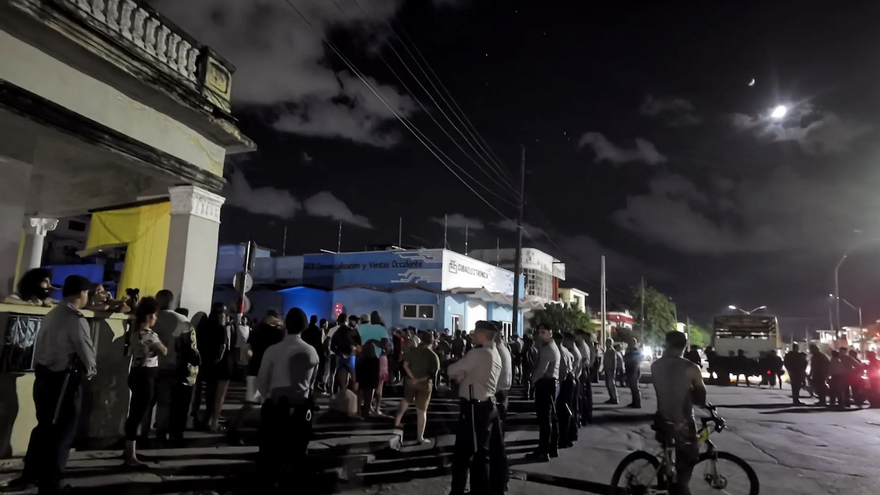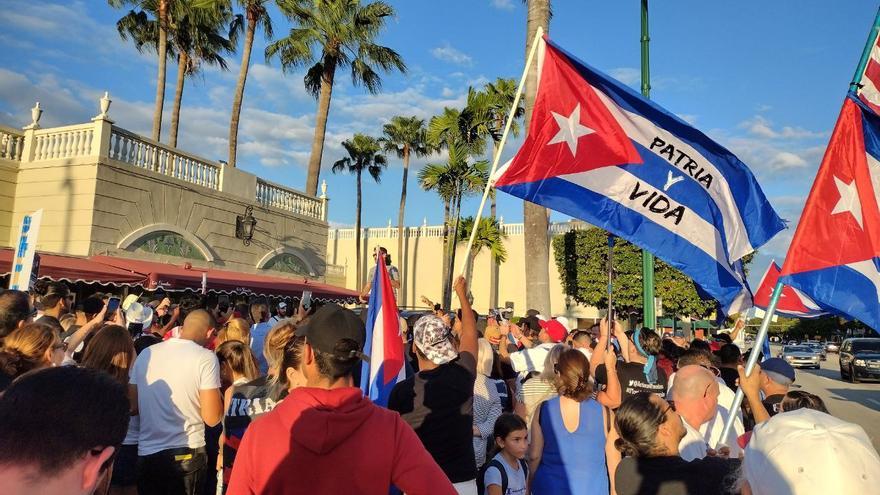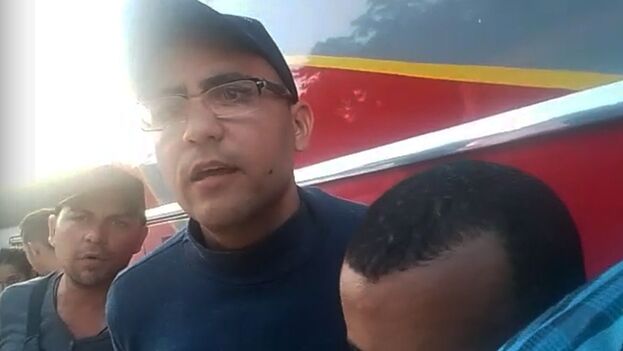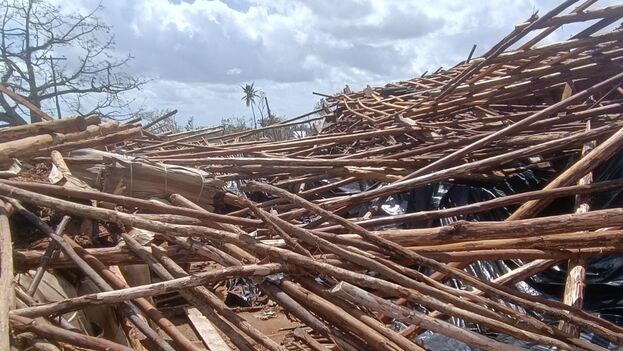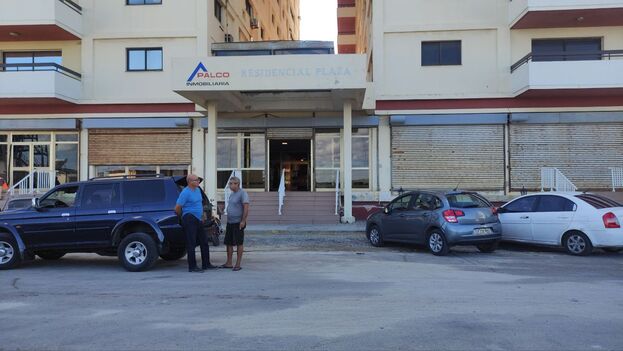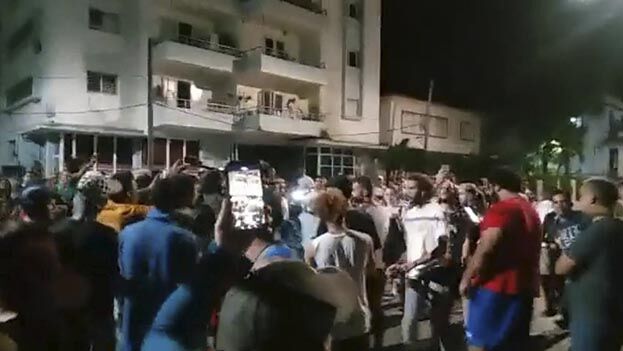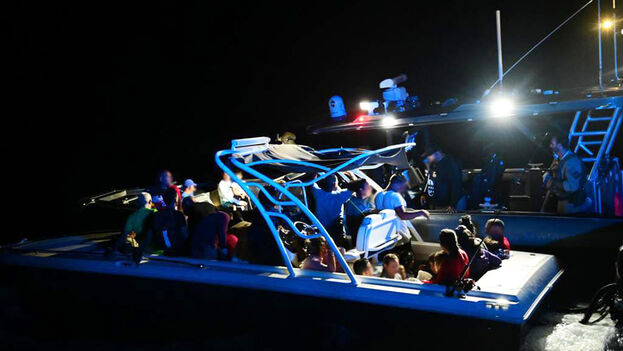
![]() 14ymedio, Havana, October 5, 2022–The family of Evelio Calvo Capote, who organized, with 21 family members, the theft of a boat from the port of Mariel with the intention of reaching the U.S. does not know where he is being held. “They grabbed him and loaded him onto a white van and they took him,” said Daniel Calvo, who lives in Miami, speaking to journalist Mario J. Pentón.
14ymedio, Havana, October 5, 2022–The family of Evelio Calvo Capote, who organized, with 21 family members, the theft of a boat from the port of Mariel with the intention of reaching the U.S. does not know where he is being held. “They grabbed him and loaded him onto a white van and they took him,” said Daniel Calvo, who lives in Miami, speaking to journalist Mario J. Pentón.
Evelio’s brother recounted that the stolen boat was intercepted in American waters. “They were spotted by a helicopter and six speed boats and they started to launch tear gas at them,” which created panic because of the children that were in the group, he said. The coast guard hopped on the boat, pointed a weapon at his brother and ordered him to stop.
Calvo Capote, as well as the rest of the group, requested asylum at the time they were interviewed by a consul, whom they also made aware of the danger they faced if they were returned to the Island. The hope of being accepted was buried when they saw that each day they were moved from one boat to another. “They went through six,” stated Daniel Calvo.
On one boat, the detainees joined two Cubans who were presumably “escapees from justice,” explained Daniel; however those people “were dropped off at Guantánamo,” while the rest, including Evelio, were transferred to a bay in Santiago, Cuba. The ship approached the dock, an official from the Ministry of the Interior boarded asking for Evelio Calvo and, “they arrested and took him.” continue reading
Daniel Calvo underscored that his brother let his mother know that “he had no hope,” because the regime was requesting the return of someone who for six years worked as a ship mechanic for the Cuban Coast Guard.
On Saturday, the US Coast Guard confirmed that they returned 22 Cubans to the island. That same day, Congressman Mario Díaz-Balart denounced on social media the disparities between U.S. President Joe Biden’s discourse, when he stressed that it was not “rational” to deport Cuban migrants. “Clearly that was another bald-faced lie, as his Administration returned those 22 Cubans, knowing full well the repercussions they’d suffer.”
Meanwhile, on Wednesday, the U.S. Coast Guard repatriated 55 Cubans aboard the vessel William Trump. The group was composed of rafters from four crafts intercepted along the Florida coast.
Through a statement, American maritime authorities exhorted rafters to avoid risking their lives on rustic boats. “Hurricane season has not ended and more storms are brewing,” warned Lieutenant Connor Ives. “Our air and surface crews are patroling and keep watch to save lives and prevent illegal and unsafe ventures.”
Since October 1, 2022, Coast Guard crews have intercepted 66 Cubans.
On the other hand, the bodies of three female Cuban rafters were found on Saturday near Key West, and with that the search for the missing came to an end. The women were part of the group of 27 people who attempted to reach Florida in a boat that capsized last Wednesday close to Stock Island, near Key West.
In all, the bodies of four women and one man were found, while nine people survived the wreck and are in custody of the authorities. One of the Cuban men rescued on Wednesday told television channel WPLG that they left the Island last Friday and had spent five days at sea when the ship wrecked. He stated that they remained “two days and two nights near the coast of Cuba and they did not rescue us.”
Translated by: Silvia Suárez
____________
COLLABORATE WITH OUR WORK: The 14ymedio team is committed to practicing serious journalism that reflects Cuba’s reality in all its depth. Thank you for joining us on this long journey. We invite you to continue supporting us by becoming a member of 14ymedio now. Together we can continue transforming journalism in Cuba.


